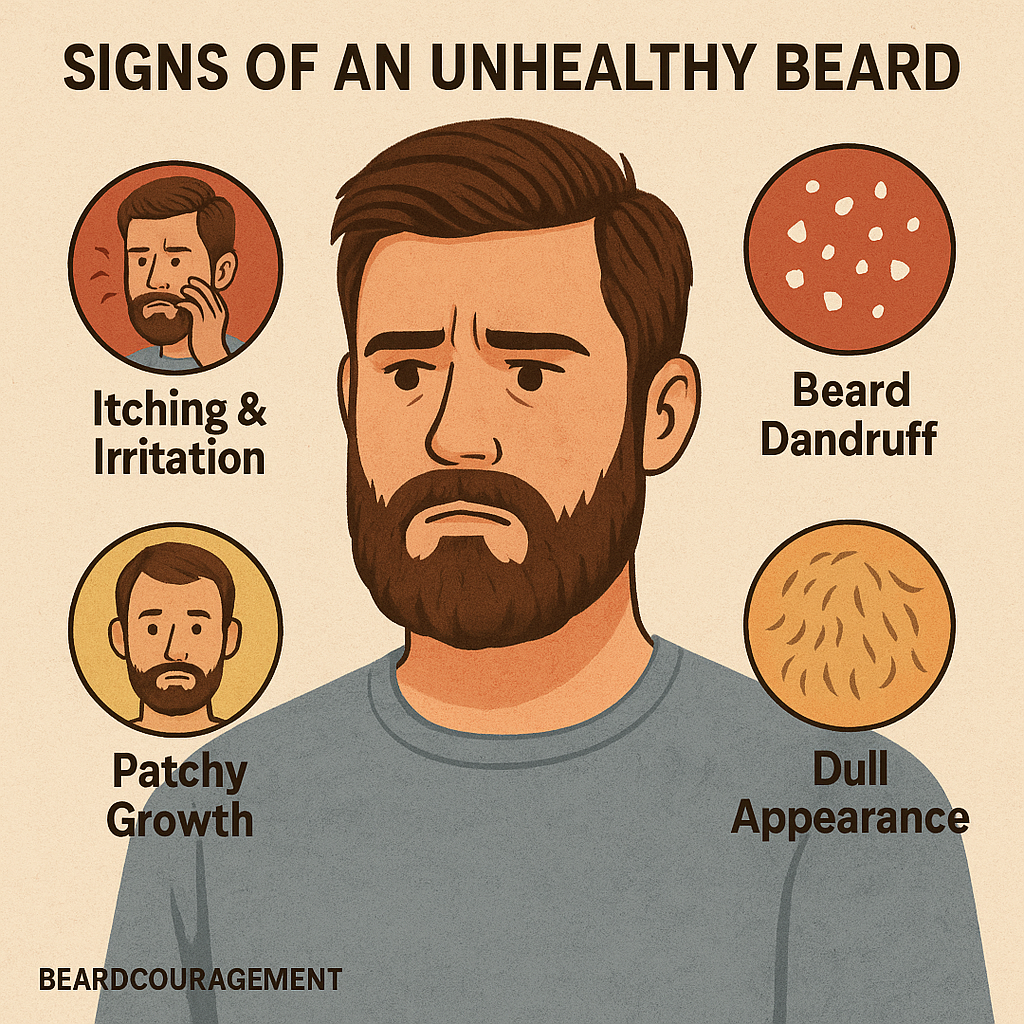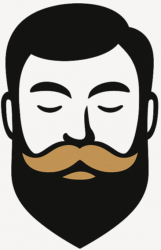
A great beard doesn’t just look good—it also signals good health and care. But even if your beard seems full, it could be hiding signs of damage, dryness, or neglect. Knowing what an unhealthy beard looks and feels like helps you correct issues early before they lead to thinning, breakage, or irritation.
Here are the key warning signs that your beard may need some extra attention—and what you can do to fix them.
1. Constant Itching and Irritation
If your beard constantly feels itchy or irritated, it’s one of the clearest signs that your skin or facial hair is unhealthy. This often happens when the skin beneath becomes dry or clogged with buildup.
Why it happens:
- Not moisturizing enough or skipping beard oil
- Using harsh soaps or shampoos meant for the scalp
- Lack of exfoliation, leading to trapped dead skin
Fix it: Use a gentle beard wash 2–3 times a week, followed by a few drops of beard oil to keep your skin hydrated and itch-free.
2. Beard Dandruff (Beardruff)
White flakes showing up in your beard aren’t just embarrassing—they’re a red flag for poor skin health underneath. Beardruff often stems from dryness, fungal imbalance, or irritation caused by over-washing.
Why it happens:
- Dehydrated skin under the beard
- Harsh cleansers or over-cleansing
- Skipping beard conditioner or oil
Fix it: Moisturize daily, and use products with natural oils like jojoba or argan. If flakes persist, try a mild anti-dandruff beard wash containing zinc pyrithione or tea tree oil.
3. Split Ends and Breakage
Healthy beard hairs are flexible and smooth. If your beard feels rough, frizzy, or you notice hairs snapping easily, you’re dealing with breakage or split ends.
Why it happens:
- Over-brushing or aggressive combing
- Using heat or blow dryers without protection
- Neglecting regular trims or oiling
Fix it: Trim your beard every few weeks to remove damaged ends. Keep it hydrated with beard balm or conditioner, and always brush gently using a boar bristle brush.
4. Uneven or Patchy Growth
While genetics play a role, a patchy or thinning beard can also signal stress, nutrient deficiencies, or improper care. If areas that once grew full start thinning, it’s worth assessing your overall beard health.
Why it happens:
- Vitamin or mineral deficiencies (especially biotin, zinc, or iron)
- Stress or lack of sleep
- Poor circulation or clogged pores
Fix it: Improve your diet, stay hydrated, and massage your beard area daily to boost circulation. Consistency with grooming and nutrition can help fill out weak spots over time.
5. Greasy or Sticky Beard Texture
A beard that constantly feels greasy or sticky, even after washing, likely has product buildup. Overusing beard oil or balm can weigh down hair, attract dirt, and clog pores.
Why it happens:
- Using too much product
- Not cleansing thoroughly
- Heavy, non-natural oils blocking airflow to the skin
Fix it: Wash your beard thoroughly 2–3 times per week with a dedicated beard shampoo. Rinse with warm water and use lightweight oils that absorb easily, like grapeseed or sweet almond oil.
6. Unpleasant Odor
A healthy beard should smell clean, not musky or sour. Persistent odor indicates trapped sweat, bacteria, or leftover product residue.
Why it happens:
- Infrequent washing or rinsing
- Excess moisture or food particles trapped in the beard
- Bacterial buildup on the skin underneath
Fix it: Wash regularly, dry your beard completely, and use a clean comb or brush. Adding a lightly scented beard oil can help maintain freshness throughout the day.
7. Dull or Lifeless Appearance
A dull beard often lacks the natural shine that comes from balanced moisture and good health. If your beard looks flat or feels rough to the touch, it’s time to restore its vitality.
Why it happens:
- Dehydration and poor nutrition
- Skipping conditioning routines
- Sun exposure or harsh environments
Fix it: Stay hydrated, eat a nutrient-rich diet, and use beard products with vitamin E or shea butter for added softness and shine.
Final Thoughts
An unhealthy beard isn’t just a cosmetic issue—it’s a signal that your grooming routine or skin health may need improvement. The good news? Most beard problems can be fixed with simple consistency. Clean, moisturize, trim, and nourish your beard just as you would the hair on your head.
With the right care, your beard won’t just look fuller—it’ll feel stronger, healthier, and more confident than ever.
